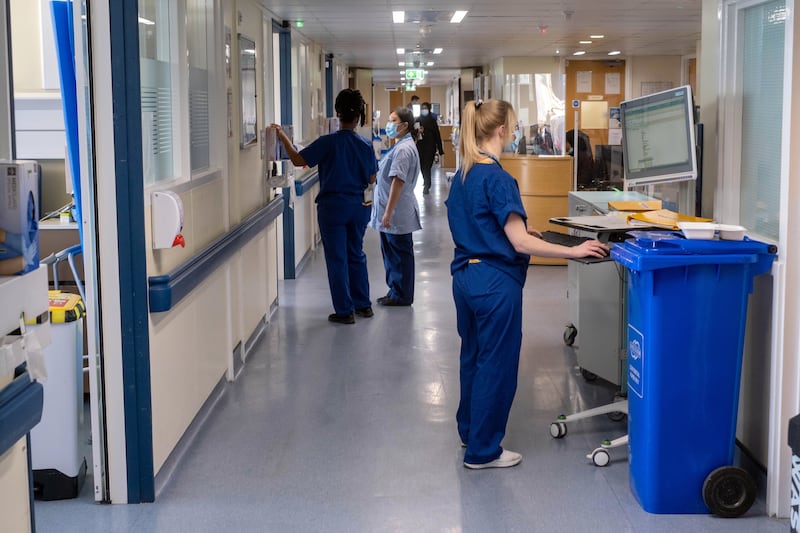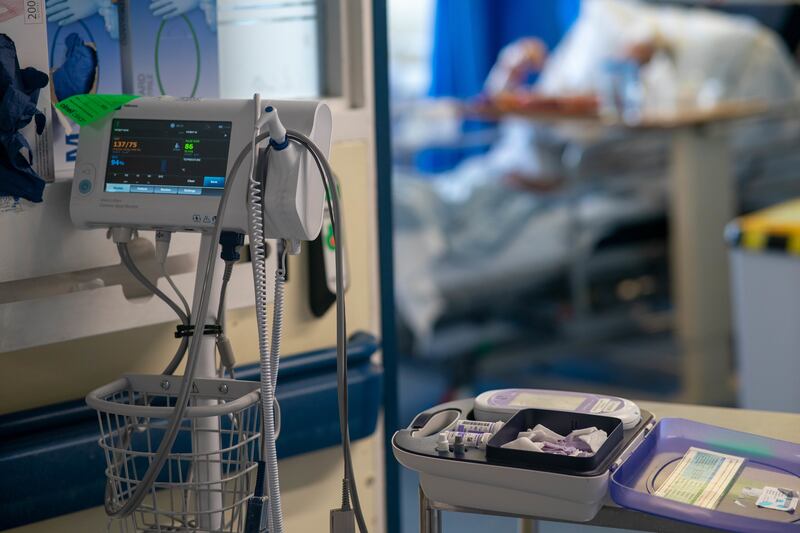New guidance is being issued to doctors and other healthcare professionals about complications of the placenta in expectant mothers, including about a condition which affected reality star Kim Kardashian.
Kardashian developed placenta accreta when pregnant with her daughter North West, which can be fatal for both mother and baby.
The Royal College of Obstetricians and Gynaecologists (RCOG) said its revised clinical guidelines highlight how the highest rates of complication occur when it is only diagnosed at delivery, showing there is a need for earlier diagnosis.
It has also updated guidance on the even rarer placenta previa-accreta, which TV presenter Amanda Holden suffered from when pregnant with her youngest daughter, Hollie.
Both conditions can result in death for both mother and baby, but the college said early diagnosis and more specialised care can help to reduce the associated risks and ensure the safest possible outcomes.
Rates of both conditions have increased and are likely to continue to rise as a result of rising rates of caesarean births and use of assisted reproductive technology, such as IVF.
The risks of both, which are often combined, increases with the numbers of previous caesarean sections and the new guidelines recommend that women must be informed of this risk when discussing the benefits and risks of a caesarean birth.
Placenta praevia refers to a low lying-placenta. It occurs when the placenta attaches in the lower part of the womb and can sometimes completely cover the neck of the womb. The condition can lead to heavy bleeding during pregnancy or birth.
It is checked for during the routine 20 week ultrasound scan. If it is detected, a woman will have the opportunity to discuss her birthing options with her healthcare professional. A caesarean is usually the safest way to give birth, but this will depend on her individual circumstances.
Placenta accreta is a rarer condition, occurring in between one in 300 and one in 2,000 pregnancies, depending on the number of prior caesarean sections.
Placenta accreta is when the placenta sticks abnormally to, or invades deeply, the muscle of the womb including nearby structures like the bladder.
When unknown at the time of birth, it usually causes heavy bleeding and sometimes a massive haemorrhage which may require an emergency hysterectomy and intensive care admission for either mother or baby, or both.
It may be suspected during routine ultrasound scans during pregnancy – specialist obstetricians-gynaecologists can diagnose a placenta accreta with a 95% accuracy using ultrasound imaging.
When a placenta accreta is diagnosed before birth, a specialist obstetrician will discuss all the birthing options and the extra care that will be needed.
It may be planned for a woman to give birth early, between 35 and 37 weeks of pregnancy, depending on individual circumstances.
The guidelines recommend women should be cared for by a multi-disciplinary team in a specialist centre with expertise in diagnosing and managing placenta accreta.
Revised guidance on vasa praevia, a rare condition affecting between one in 1,200 and one in 5,000 pregnancies, has also been published.
In vasa praevia, blood vessels from the baby to the placenta, unprotected by placental tissue or the umbilical cord, pass near to the cervix and can tear during labour or when a woman’s waters break.
This is very dangerous as the blood lost comes from the baby.
Risk factors for vasa praevia include a low-lying placenta, a multiple pregnancy or if the placenta or umbilical cord develops in an unusual way.
It may be possible to diagnose with ultrasound imaging at the 20 week scan, and if confirmed a woman should be offered a planned caesarean at around 34-36 weeks.
If suspected during labour or when a woman’s waters break, an emergency caesarean is usually recommended.
Professor Eric Jauniaux, lead author of the guidelines and consultant obstetrician and senior lecturer at University College London, said: “We hope this updated guidance will support healthcare professionals during discussions with women and their partners who may be considering assisted reproduction, particularly IVF, or an elective caesarean birth.
“These are both risk factors that can increase risk of developing these serious complications of the placenta.
“Guidelines should also help clinicians diagnose these potential complications early, and to discuss with women the safest possible ways to give birth and the advantages and disadvantages associated with each approach to ensure the best possible outcomes and to ensure personalised care.”
Dr Geeta Kumar, chairwoman of the RCOG Patient Information Committee, said: “It is important for women to be aware of these complications of the placenta, but they should be reassured that these are very rare and specialist care is available.
“Early diagnosis is key to reduce harms associated with placenta praevia and accreta to ensure the safest possible outcome for mother and baby.”








